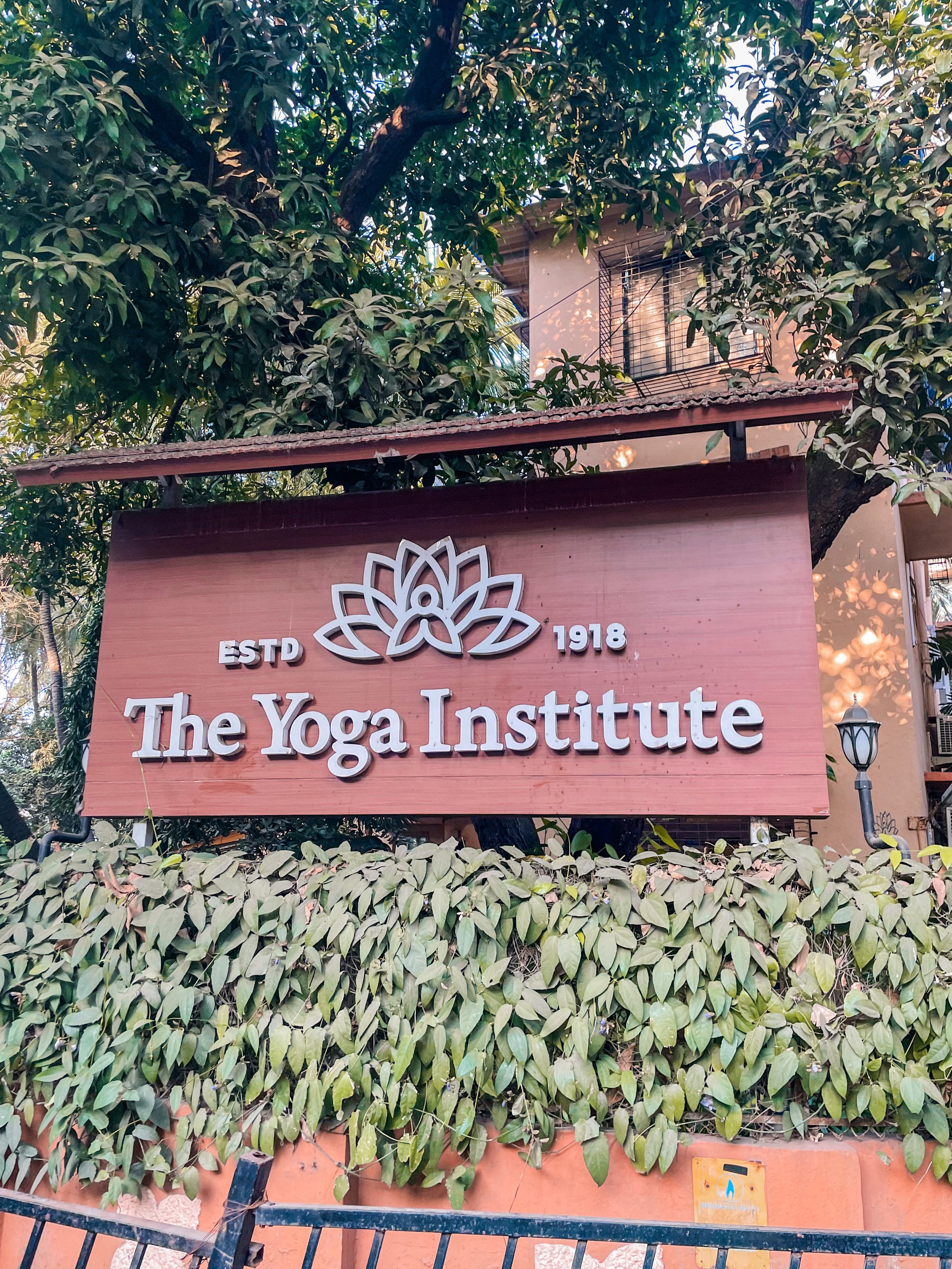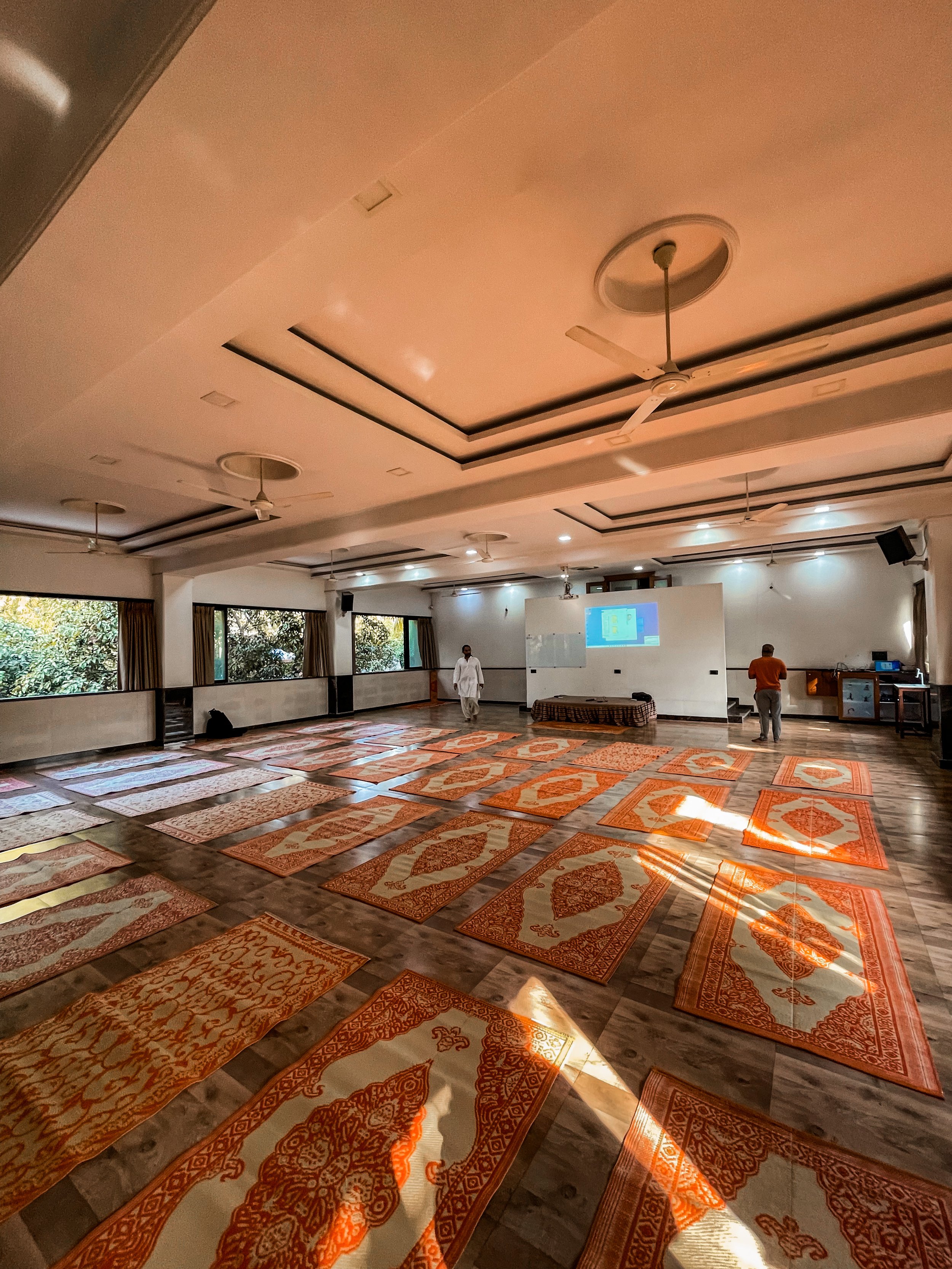No Mud, No Lotus: A Day at the Yoga Institute
When I think of Mumbai, I think of chaos: honking horns and Hindi shouting while the hot sun beats down the pavement. A smoky scent clogs my lungs as an old Indian man with tanned, wrinkled skin, sunken eyes, and wispy white hair approaches me and thrusts an incense holder in my face, to which I quickly hold my hand up and wave the man away. Indians crowding the sidewalks, brushing past me and snapping photos, and speaking excitedly to one another about the American girl they just passed. A wave of sights, sounds, and smells came toward me all at once, rendering me both awestruck and overwhelmed as my brain struggled to take it all in.
And yet, it seemed as though the cacophony and pungent smells dissipated when I stepped foot into the Yoga Institute.
The Oldest Yoga Center in the World
The Yoga Institute was established in 1918 by Shri Yogendra Ji, the “father of modern yoga.” At the Institute, in the museum, one can learn about the rich history of yoga and how the different forms evolved hundreds of years ago.
In 1947, Smt. Hansaji J Yogendra became the director, and she runs the Institute. The Institute provides instruction for different types of yoga, including (but not limited to) Hatha, Sun Salutations, Vinyasa flows, Power Yoga, and restorative yoga. They also lead courses in meditation and wellness. The Institute has produced over 100,000 teachers worldwide via online and in-person instruction.
A Much-Needed Reset
On January 15, I traveled to the Institute with a Semester at Sea field program for a day of reflection and tranquility after spending the last two days in New Delhi and Agra, tasting the local scenes and learning about the Taj Mahal, and catching a late flight back to the World Odyssey.
I awoke early the following day to meet with friends from New Delhi who had also registered for the field program. After breakfast, we hopped on a bus and headed to the Institute, a short drive from the cruise terminal. When we arrived, we walked down a street lined with trees, with branches and leaves arching as if they were creating a tunnel.
Greenery enshrouded the Institute. A single wooden sign hung outside was the only indication that we’d arrived. We entered through a small metal-rod gate, and I was instantly wonderstruck by the beauty of the Institute. Contrasting the hot concrete and trash outside, the Institute was blanketed in foliage, including vines, moss, and flowers. The roof was a thick cover of leaves. As Insitute instructors led us through the facility, we passed by bubbling brooks and cushioned seats meant for meditation.
After taking our shoes off (everyone walks barefoot in the Institute, outside and inside), we went inside the central building and climbed four flights of stairs to reach the top floor, where our first class would be. Mats lined the floor, and the large windows lining the walls were open, letting sunlight and the warm breeze enter the room. We placed our bags in the corner and claimed our mats. Then we were introduced to our instructor, and the lesson began.
I’ve been practicing yoga for a little over a year, so I was somewhat familiar with the exercises. However, it was insanely cool to learn about the mindset that accompanies yoga and not simply “going through the motions.” The instructor took us through Hatha flows, which consist of long stretches and focus on breathwork. We learned how to equalize our breathing and incorporate it into our stretches.
After Hatha, we settled in and learned about more breathwork and meditation. It was an opportunity to relax and then reflect. I already love meditating, but doing it in that room, feeling the sunlight, and listening to the rustling of the trees was a new level of peace. After our meditation, we were dismissed for lunch, a simple but delicious traditional Indian meal. Per the yoga teaching of only using what you need, we ate on the floor silently and washed our dishes once we finished. Then, we explored the museum, filled with relics that belonged to ancient yogis and the history of yoga. After that, we returned to our “classroom” for more lessons.
We got the chance to meet the director, Smt. Hansaji J Yogendra told us about her life at the Institute alongside her late husband and son. She also advised us on how to lead pure, yogic lifestyles and allowed us to ask questions, which was terrific. I loved her energy: it was warm and motherly, and hearing from her was like receiving a comforting hug.
After that, we met a woman who taught us the “Yoga mindset.” We played games to raise our vibrations and invite positive energy into ourselves. One game we played involved us singing a song while marching in a circle. Our instructor told us when to change directions and pace (it was more fun than it sounds!). We also played a game with balloons, where we all blew up a balloon and then tried to pop each other’s balloons. The winner was the last one with a blown-up balloon (of course, I was one of the first to lose). We began the lesson being very quiet and tired, and we ended it laughing with one another. The instructor taught us many things, but here are the two that resonated with me the most:
Do not do - Be.
Do not suffer because of others.
As I continue my voyage, these lessons are helping me a lot. Over a few short weeks, I feel I’ve become a happier, lighter person (though that’s also probably because I’m living my dream of traveling the world).
After that lesson, we performed our last yoga practice, Sun Salutations. I was also familiar with this style of yoga, and I picked it up quickly. I enjoyed this session – I got a light sweat and felt energized and rejuvenated afterwards. Now, I want to continue doing Sun Salutations each morning. It’s a fantastic way to start the day.
We finished the day with tea and snacks and stopped by the bookstore before returning to the ship.
The Yoga Lifestyle
“Without mud, the beautiful lotus flower cannot grow.”
Vietnamese monk, Thich Nhat Hanh, wrote the book “No Mud, No Lotus: The Art of Transforming Suffering.” It’s an analogy: without pain and suffering, happiness can’t be.
Yoga is more than just physical movement. Yoga is a balanced mind, body, and soul. It is accepting that you can’t have light without darkness, happiness without suffering, or wealth without despair. It’s choosing to acknowledge your emotions and allow them to pass – not avoid them. Yoga is releasing control of any responsibilities besides your own. It is choosing not to let external forces influence your internal self. It’s choosing a simple life where you take only what you need and give as much as possible. It is choosing to dedicate yourself to good work, to serve God, nature, or even yourself – whatever is the highest divine to you.
I’m so grateful to have immersed myself in this culture, even for just one day. I know that I’ll take what I’ve learned with me as I continue my adventures.













